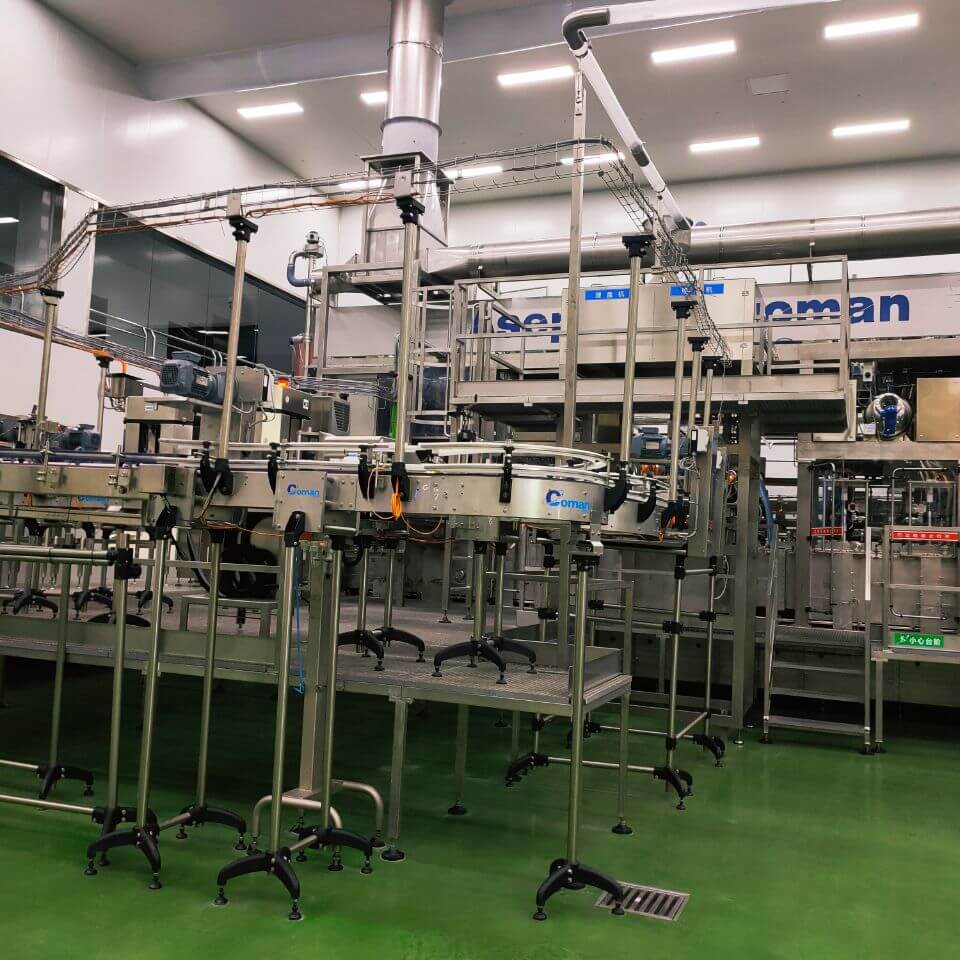More and more, the decision falls in favor of cold aseptic filling. The market for products filled in this way is growing; consumers like fresh, natural beverages. And retailers are also happy because these beverages have a long shelf life and there’s no need to keep them chilled.
Aseptic filling is making it possible to bring innovations onto the market - even in highly sensitive products - in a short space of time. The various aseptic filling techniques are proving to be very gentle on the product and its ingredients and no preservatives are needed. The vitamins are also retained. And that fits in very well with the major market trends towards more natural products, health benefits, and a pleasant aroma.
Aseptic filling is an aseptic process that requires close coordination and complex interaction between personnel, sterilized product, the fill/finish equipment system, cleanroom, and support facilities, and sterilized filling components.
Aseptic filling differs from other traditional methods of food packaging in that the food product and the package are continuously sterilized separately and then meet in the sterile environment provided by the aseptic filler.
Aseptic filling technology aims to achieve the best filling speed, accuracy, and flexibility while maintaining the sterility of the product and containers throughout the process. Avoiding recontamination is key. The filling environment must be aseptic: the whole area must be thoroughly cleaned and sterilized before starting production using proper chemicals and strong mechanical action and, immediately after production, any possible product residue must be removed to avoid the risk of microorganism growth. Once clean, the sterility of the microbiological isolator is maintained by HEPA filtered air at overpressure.
Aseptic processing is a processing technique wherein commercially thermally sterilized liquid products (typically food or pharmaceutical) are packaged into previously sterilized containers under sterile conditions to produce shelf-stable products that do not need refrigeration. Aseptic processing has almost completely replaced in-container sterilization of liquid foods, including milk, fruit juices, and concentrates, cream, yogurt, salad dressing, liquid egg, and ice cream mix. There has been an increasing popularity for foods that contain small discrete particles, such as cottage cheese, baby foods, tomato products, fruit and vegetables, soups, and rice desserts.
Aseptic processing involves three primary steps: thermal sterilization of the product, sterilization of the packaging material, and conservation of sterility during packaging. To ensure commercial sterility, aseptic processing facilities are required to maintain proper documentation of production operations, showing that commercially sterile conditions were achieved and maintained in all areas of the facility. Any breach of a scheduled process for the processing or packaging system means that the affected product must be destroyed, reprocessed, or segregated and held for further evaluation. In addition, the processing and packaging system must be cleaned and re-sterilized before processing and/or packaging operations can resume. Packaging equipment and packaging materials are sterilized with various mediums or combinations of mediums (i.e., saturated steam, superheated steam, hydrogen peroxide and heat, and other treatments).
The microbiological safety of the aseptic filling process has been increased through a wealth of measures. For example, treatment for the exterior of the bottle has been improved, the sterile area has been divided off from the non-sterile area even more rigorously and hygienic materials such as stainless steel have replaced plastic.
The cold-aseptic filling is now a widely used process that is consistently being adapted to new demands. For example, rising energy prices are having an effect on energy efficiency in mechanical and plant engineering, and thus companies are focusing on economic efficiency. For this reason, the cleanrooms are getting smaller and smaller when aseptic processes are used, thus reducing energy requirements, improving operations, saving time and money, and increasing operational safety.
Only a fully integrated system can ensure the efficiency of a cold-aseptic process. The peripheral equipment must be right and do the groundwork for the aseptic process or be aseptic itself. For example, this applies to the process technology for the flash pasteurizer or ultra-high temperature system, to the mixer with sterile buffer tank, the aseptic fittings, and the media preparation of the disinfectant solution, sterile water, sterile air, steam, and inert gas.
A cold-aseptic filling system can replace hot-filling processes, or bottle and can filling systems that use tunnel pasteurizers. There must always be an integrated approach in which equal attention is paid to filling safety, operating costs, and operating safety, and which factors these aspects in during implementation. The opportunities provided by cold-aseptic filling mean that filling plants are investing in the future of their company, which will be able to implement new, consumer-oriented product concepts.
